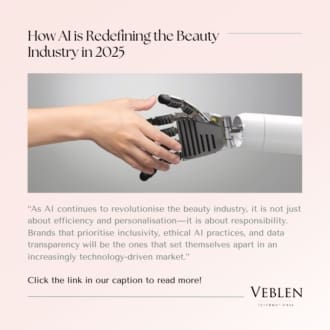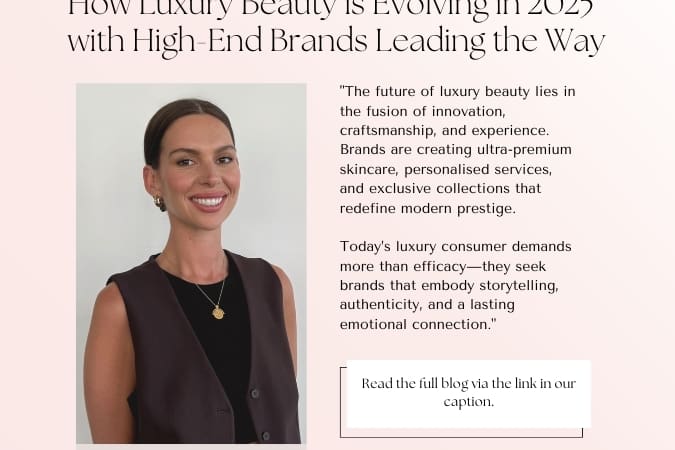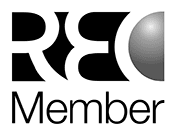Luxury beauty has always been synonymous with prestige, craftsmanship, and innovation, but in 2025, the category is evolving beyond traditional definitions. As economic uncertainty looms and consumer expectations shift, high-end beauty brands are finding new ways to maintain their desirability. From positioning skincare as an alternative to aesthetic procedures to creating hyper-exclusive product launches and immersive retail experiences, luxury beauty is adapting to a world where consumers demand more than just a label—they want exclusivity, science-backed efficacy, and an experience that feels truly premium.
So, how exactly is luxury beauty evolving this year, and which brands are setting the standard?
Ultra-Premium Beauty Continues to Thrive Despite Economic Uncertainty
While cost-conscious spending has increased across many beauty categories, the ultra-luxury segment remains resilient. Brands like Chanel, Dior, and Augustinus Bader continue to see strong demand for their high-end skincare and cosmetics, proving that affluent consumers are still willing to invest in premium beauty. According to a 2024 McKinsey & Company report, the luxury beauty market is projected to grow by 7.2% annually, outpacing mass-market cosmetics.
A key driver of this resilience is the shift in spending habits among wealthy consumers. Instead of splurging on seasonal fast fashion, many are investing in high-quality, long-lasting beauty products that promise tangible results. Dior’s L’Or de Vie La Cure, priced at over £1,000, exemplifies this trend—positioning skincare as a long-term investment rather than just another product in a routine.
Luxury Skincare is Becoming an Alternative to Aesthetic Procedures
As the non-invasive aesthetics market booms, luxury skincare brands are leveraging their scientific advancements to compete with in-clinic treatments. Augustinus Bader, La Prairie, and Sisley Paris are among the brands formulating products with bioengineered ingredients, peptide technology, and stem cell innovations that claim to rival injectables.
With consumers increasingly looking for non-surgical anti-ageing solutions, high-end skincare is positioning itself as the sophisticated alternative. Chanel’s Sublimage L’Extrait de Nuit, for example, harnesses night-active vanilla planifolia molecules to deliver regenerative effects that mimic post-procedure recovery, while Clé de Peau Beauté’s La Crème, priced at nearly £500, markets itself as delivering results comparable to professional treatments.
This shift is also being driven by growing consumer scepticism toward excessive aesthetic interventions. With concerns over ‘filler fatigue’ and unnatural results on the rise, skincare brands are capitalising on the demand for a more holistic, long-term approach to skin health.
Exclusivity and Scarcity: The Power of Limited-Edition Beauty
Scarcity has long been a hallmark of luxury, and in 2025, this strategy is being used more than ever to drive desirability. Limited-edition beauty launches, waitlists, and exclusive collaborations are creating a sense of urgency among consumers, reinforcing the idea that luxury beauty is not just about efficacy—it’s about access.
Dior Beauty’s Rouge Premier, a £300 refillable lipstick encased in a ceramic shell handcrafted by Maison Bernardaud, is a prime example. The product was launched in limited quantities, instantly selling out, and reinforcing Dior’s status as a luxury leader. Similarly, Byredo’s beauty line, known for its minimalist yet artistic aesthetic, has seen success with capsule collections that are intentionally produced in small batches.
Waitlists have also become a strategic tool for driving demand. When Hermès Beauty launched its Plein Air Complexion Balm, the product had an eight-week waiting list, positioning it as an exclusive must-have. This ‘drop culture’ approach, borrowed from the fashion industry, has proven to be a winning formula for luxury beauty brands looking to maintain their exclusivity.
Experiential Retail and Private Client Services Define the New Luxury
Luxury beauty is no longer just about the product—it’s about the experience. High-end brands are investing heavily in experiential retail spaces, offering personalised services that cater to their most affluent clientele.
Chanel’s newly opened Fragrance and Beauty Boutique in London’s Covent Garden offers an immersive shopping experience where clients can access bespoke fragrance consultations and VIP treatments. Similarly, Guerlain’s 68 Champs-Élysées flagship in Paris now includes a private salon where clients can create custom perfumes and skincare formulations, taking personalisation to a new level.
Private client services are also becoming a key pillar of luxury beauty. Brands like Clé de Peau Beauté and La Mer now offer white-glove concierge services, where top-tier clients can access private shopping experiences, invite-only events, and early access to limited-edition launches. This hyper-personalised approach reinforces the exclusivity and desirability of luxury beauty, making it about much more than just the products themselves.
Georgina Mason, our Head of Beauty at Veblen, shares her thoughts on the topic:
“Luxury beauty is evolving in 2025, defined by innovation, exclusivity, and immersive brand experiences. Ultra-premium skincare is leading the charge, combining rare ingredients with cutting-edge science to deliver transformative results – with brands like Swiss Perfection setting the standard. Hyper-personalised products and bespoke consultations are also gaining momentum, forging stronger emotional connections between consumers and brands.
Limited-edition launches and high-profile collaborations continue to fuel desirability, turning beauty into a form of collectible art. A perfect example is Carolina Herrera’s ready-to-wear makeup collection, where consumers can pair refillable lipsticks with any Fabulous Kiss Lipstick Cap, then customise with bangles, charms, and tassels. This approach celebrates beauty products as something to be shown off, rather than tucked away – while also reducing unnecessary packaging waste.
Retail spaces, too, are transforming into luxury destinations, offering private treatments, scent chambers, and curated events that elevate the in-store experience. At the same time, sustainability is emerging as a defining pillar of modern luxury. Brands like Aesop, Medik8, and Tata Harper are also embracing refillable formats and ethical sourcing as core commitments. By blending heritage with innovation, rich storytelling, and thoughtful craftsmanship, today’s luxury beauty brands are going beyond products – they’re shaping a desirable lifestyle that continues to captivate consumers around the world.”
The Future of Luxury Beauty in 2025
Luxury beauty is no longer just about premium packaging or heritage branding—it’s about science-backed innovation, exclusivity, and delivering an experience that justifies the price tag. As consumer behaviours continue to shift, brands that embrace cutting-edge skincare technologies, limited-run products, and immersive retail experiences will continue to dominate the market.
The high-end beauty sector isn’t slowing down—it’s simply evolving. And for those who can afford it, the allure of a meticulously crafted skincare formula, an invitation-only beauty consultation, or a sold-out lipstick remains stronger than
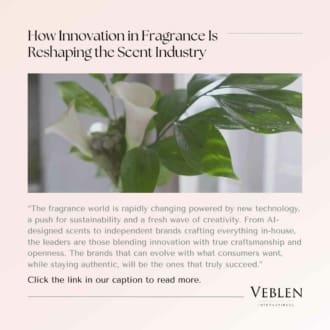
How Innovation in Fragrance Is Reshaping the Scent Industry
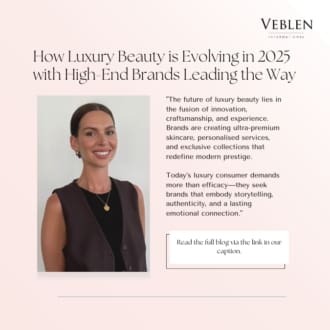
How Luxury Beauty is Evolving in 2025 with High-End Brands Leading the Way
